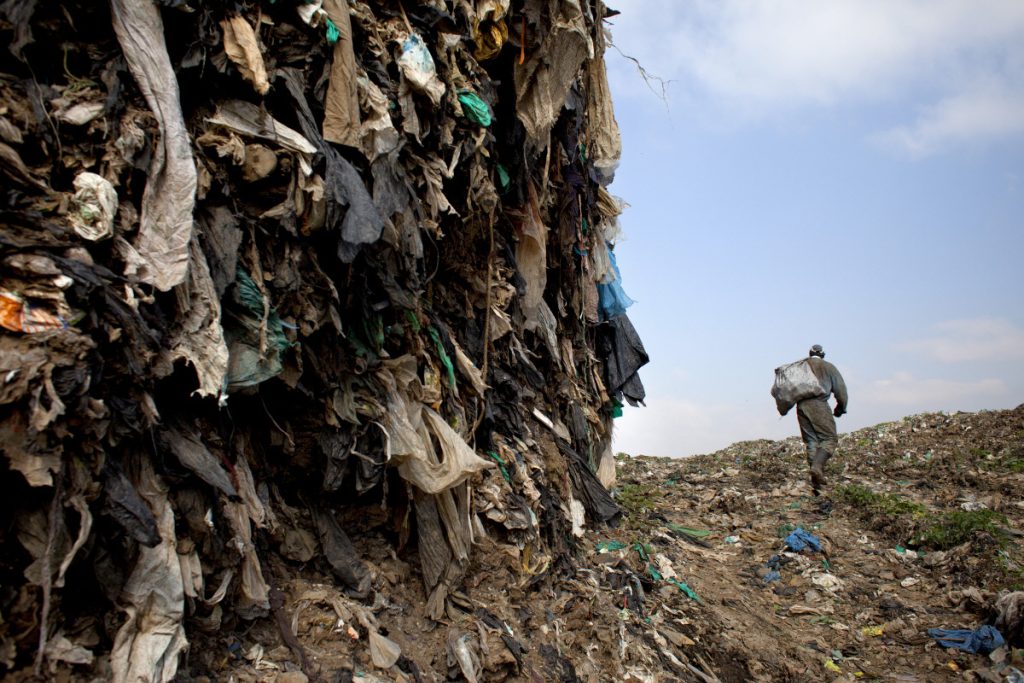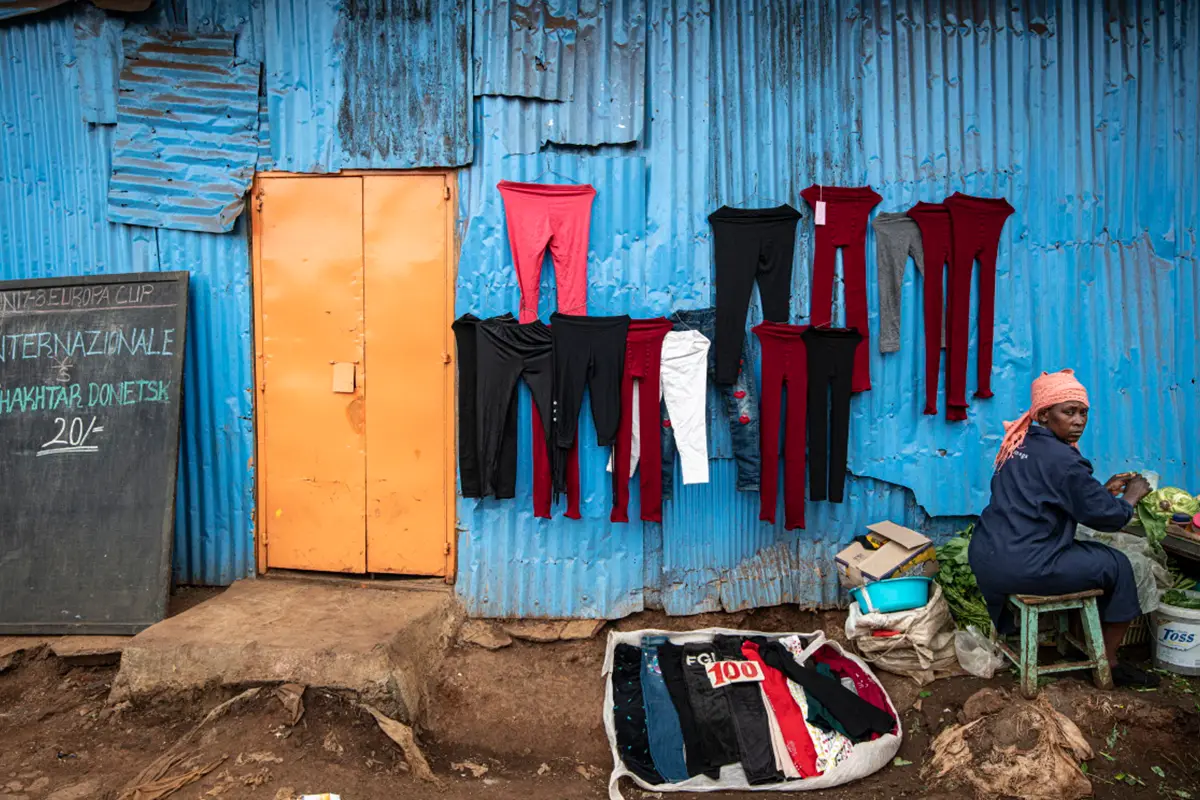Textile waste disposal markets are vital in Kenya. However, discarded dispatches coming from Western countries are responsible for turning the Global South as a textile dumping ground
A third of all second-hand clothing shipped to Kenya is plastic waste in disguise. The report by Changing Markets Foundation, Netherlands
Each year, around 30 percent of donated clothing sent to developing nations in the Global South of the world ends up in landfills or floods local markets, displacing local production. A recent study by the Changing Markets Foundation based in the Netherlands has shed light on the severity of this issue in Kenya, where an estimated 900 million pieces of second-hand clothing are imported annually.
The majority of the clothing reaching Kenya’s territory is composed of synthetic fibers like polyester or is in such poor condition that it cannot be repurposed for donation. As a result, some of these garments are incinerated in landfills near Nairobi, posing health risks to informal waste collectors due to the toxic fumes generated, or they eventually find their way into water bodies, breaking down into microfibers that are ingested by aquatic animals. The report emphasizes that the used clothing market, in reality, is contributing massively to the country’s plastic waste problem.
The plague of textile waste disposal and synthetic fibers pollution: Kenya’s territory used as a dumping ground for ‘mitumba’, second-hand market waste
When we, citizens of the Global North, decide to get rid of a garment included in the ‘donate’ pile, it usually makes us feel good about recycling it rather than tossing it in the trash. We tend to forget it was even here in the first place. However, after parting ways with it, it embarks on a journey that spans countries and continents, leaving its polyester fibers adrift in the sea for a thousand years. In 2021, the European Union alone sent 22.5 million kilograms of clothing, totalling more than 112 million individual items, to Kenya. This constitutes only a fraction of the immense volume of clothing discarded annually, which amounts to 5.8 billion kilograms or roughly 11 kilograms per person.
Kenya boasts a thriving second-hand clothing industry that employs millions of people, primarily due to these imports. When the ships full of used clothes arrive at Mombasa port, large bundles are unloaded and placed in warehouses. These imported second-hand clothes are referred to as ‘mitumba’, a Kiswahili term meaning bale or bundle, as the clothing is often packaged in bales for sale to retailers. They get sold to intermediaries who eventually transport them to bustling undercover markets located in major urban centers. At this stage, the clothes within these bundles are purchased by second-hand market traders.
Around 40% of mitumba holds no market value and is essentially plastic textile waste disposal, with about two-thirds of it typically composed of synthetic fibers. Retailers of second-hand clothing in Kenya consider every mitumba purchase a gamble because they cannot predict how much of each bale can be resold and how much is worthless until they’ve opened and sorted through it.

Kenya second-hand markets: half of all donated clothing does not meet the quality standards for resale and get discarded
The report presented by Changing Markets Foundation revealed that some of textile waste disposal items reaching Kenya’s territory are stained, heavily damaged, or ill-suited for Kenya’s warmer climate, such as skiing gear and winter clothing. A quote between 20 and 50 percent of all donated clothing usually does not meet the quality standards for resale in the local second-hand markets, thus unavailable for repurposing.
This means that they are usually discarded into industrial wipes or low-grade fuel for peanut roasters, get lost in the Nairobi river, scattered in markets, or sent to vast plastic dumping grounds like the Dandora landfill.
On a daily basis, Kenya gathers approximately 150 to 200 tonnes of textile waste, equivalent to 60 to 75 truckloads, through dumping, burning, or overflowing dumpsites. The issue in Kenya, which is no news to the country, is that the infrastructure for managing and disposing of waste is overwhelmed by the vast amount of clothing waste shipped there. Their waste systems are simply unable to handle the influx.
Clean Up Kenya and Wildlight: non-profit organizations working as an advocate for Kenya’s sustainable public sanitation
The research relied on customs data and fieldwork conducted by nonprofit organizations, including Clean Up Kenya and Wildlight.
Founded in 2015, Clean Up Kenya serves as a prominent advocate for sustainable public sanitation efforts in the nation, guided by the principles outlined in Chapter 42 of the Kenyan Constitution, which mandates that every Kenyan should reside in an environment that is both safe and clean.
To address the plastic pollution issue, Clean Up Kenya founder Betterman Simidi Musasia suggested that items be more carefully sorted at the donation stage before being shipped to Kenya, rather than blindly forwarding them, as a preventive measure at the source. The problem of clothing waste has been exacerbated by the rise of fast fashion in wealthier countries, where garments, often made from synthetic fibers, are worn only a few times before being discarded. In response, the report recommended the use of non-toxic and sustainable materials in textile production and the implementation of more robust extended producer responsibility programs worldwide. It pointed out that the Global North often uses the trade of used clothing as a way to cope with the significant waste generated by the fast fashion industry.
Dandora, Kenya: East Africa’s largest landfill. The Gikomba market worsening Nairobi’s plastic pollution through synthetic fibers
Dandora is East Africa’s largest landfill. It sits on the outskirts of Gikomba Market, the bustling heart of Nairobi’s second-hand clothing industry. This market not only generates government revenue through customs duties but also creates tens of thousands of job opportunities. Moreover, it provides affordable, high-quality clothing options for Kenyans.
Despite it may be argued that this business model perpetuates the longstanding issue of how Africa can develop its own industry while being inundated with low-cost imports, traders in Gikomba view it differently, considering it a valuable source of employment.
Prices typically vary from 400 to 1 000 Kenyan shillings ($4.50-$11.20) per item, depending on their quality and brand. This scenario is common across Africa, with Ghana, Tanzania, Benin, Uganda, and Kenya being some of the largest markets for second-hand clothing. These markets represent a solution for many people in a continent with a population of over 1 billion, where economic growth often doesn’t translate into improved living standards. Up until three decades ago, people depended on more expensive local products, whereas now, shoppers in Nairobi’s Gikomba market can turn up luxury items for a fraction of the original price.
Kenya’s dumpsites overflowing with synthetic fibers: Changing Market Foundation warns the rest of the Global South might share the same fate
George Harding-Rolls, Changing Market Foundation’s campaign manager, asserts that unless the fashion industry undergoes fundamental changes, what has been witnessed in Kenya and worldwide is only the beginning. Recycling companies must not be allowed to hide behind empty promises and should be prohibited from exporting substandard clothing. Much of this waste clothing is composed of synthetic fibers, which exacerbate the problem.
While there are already EU regulations in place to limit the international export of plastic waste, the news is the EU Parliament voted in favor of a proposal in January to ban the export of all plastic waste to non-OECD countries, aiming to address the problem more effectively. Currently, only the export of plastic waste categorized as hazardous or difficult to recycle is prohibited. Whether this measure will effectively curb waste from the fashion industry remains uncertain but doubtful.
Given that the plastic waste generated by fast fashion in the EU is already classified as ‘difficult to recycle’, the ongoing unlawful exportation uncovered by the report is already illegal under existing restrictions. Nevertheless, waste is still being illicitly exported, concealed within bales of higher-quality clothing that will be reintroduced into Kenya’s second-hand clothing markets.
Changing Market Foundation
The Changing Markets Foundation was formed to accelerate and scale up solutions to sustainability challenges by leveraging the power of markets.
Working in partnership with NGOs, other foundations and research organizations, we create and support campaigns that shift market share away from unsustainable products and companies and towards environmentally and socially beneficial solutions.



















